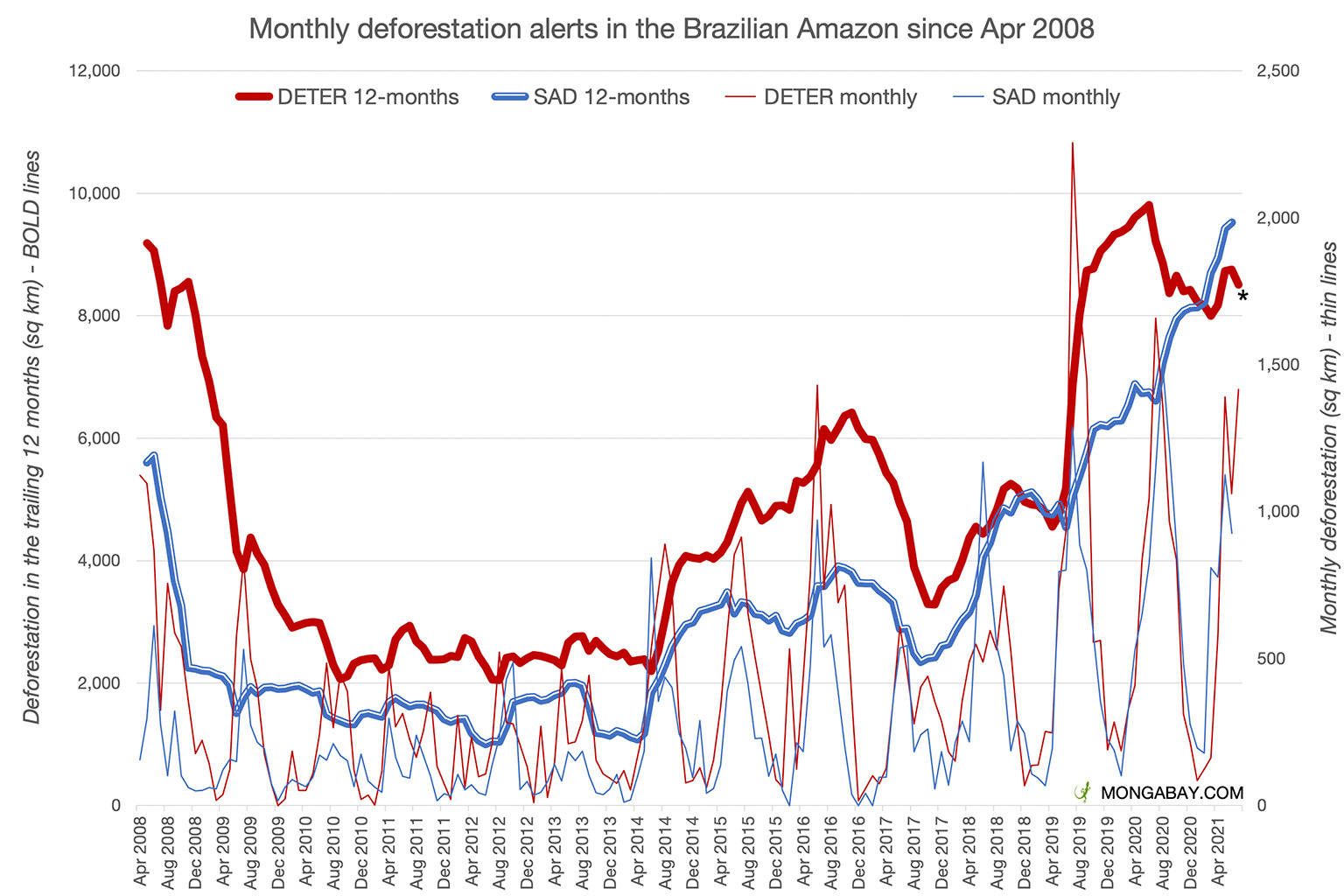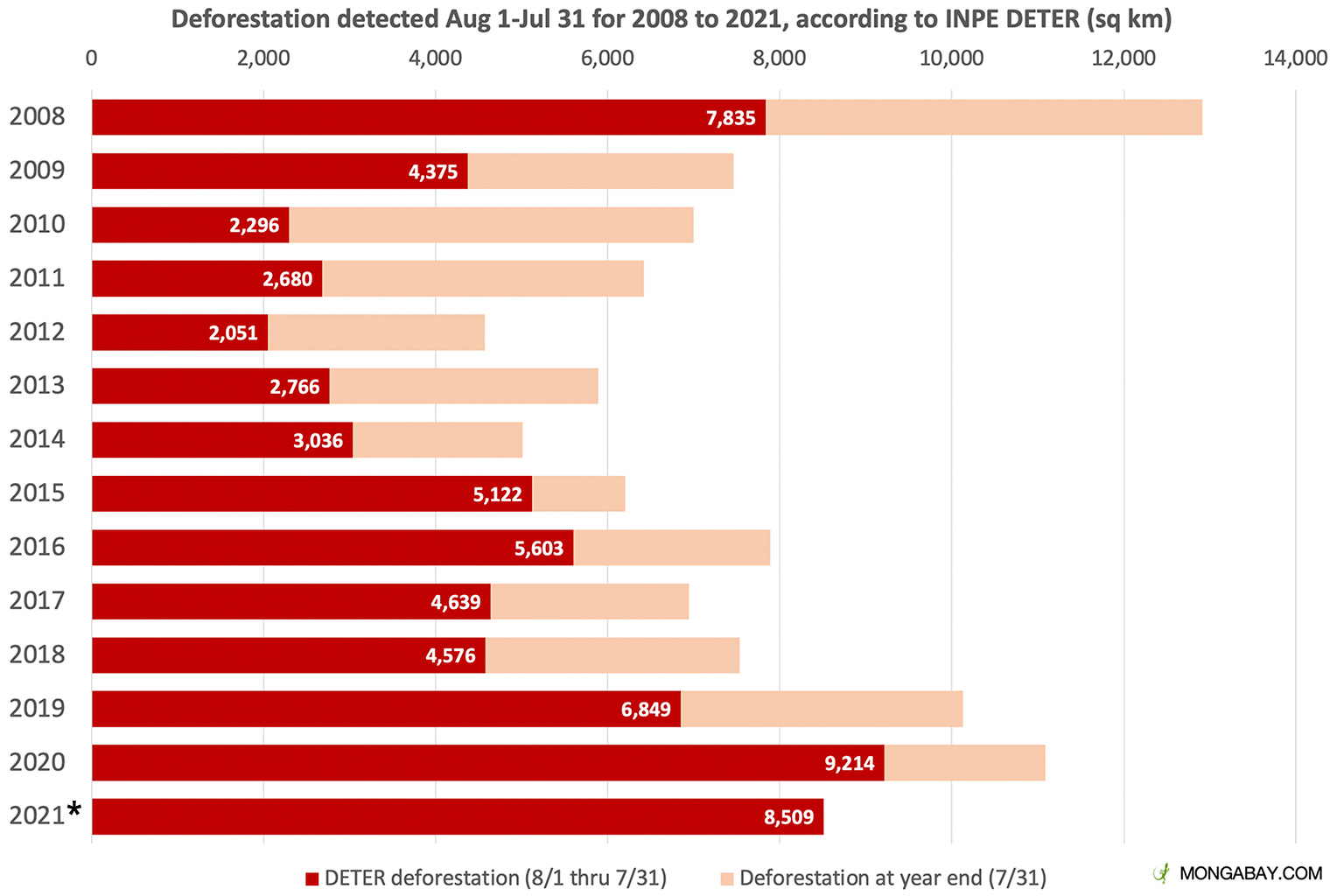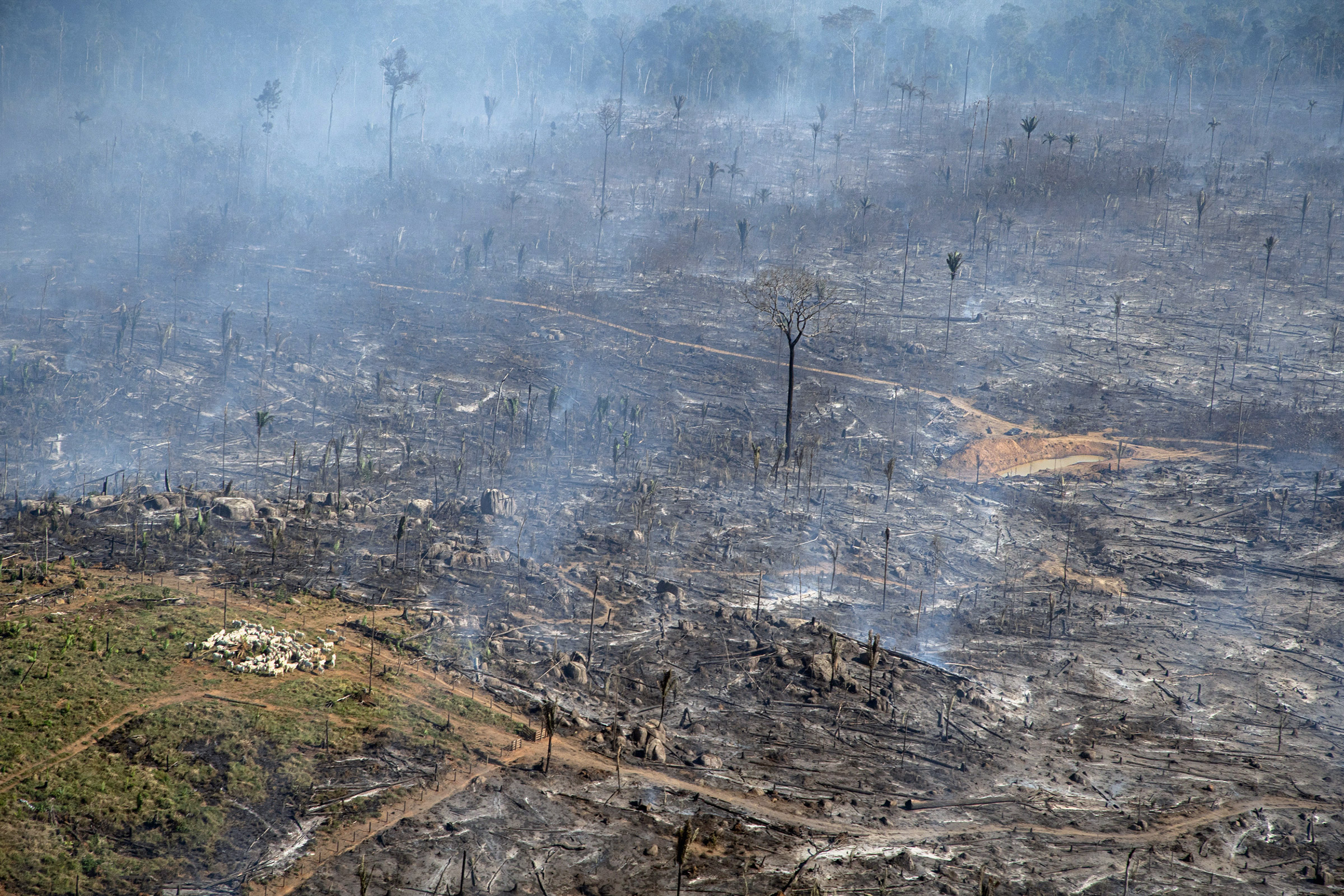- Deforestation in the Brazilian Amazon is on track for the first year-over-year decline since President Jair Bolsonaro took office, according to data released today by the country’s national space research institute INPE.
- INPE’s satellite-based deforestation alert system has recorded 1,417 square kilometers (547 square miles) of forest clearing through the first 30 days of July. Final figures for the month are expected next week.
- But the new data won’t ease worries about trends in the Amazon. On Tuesday, Brazil’s lower house of Congress passed a bill that critics say will legalize illegal land-grabbing in the Amazon.
- Environmentalists and scientists are also concerned that forest loss could worsen in coming months due to abnormally dry conditions across vast swathes of the Amazon.
INPE released updated data on August 13.
Deforestation in the Brazilian Amazon remained persistently high in July, but the country is nonetheless on track to experience the first year-over-year decline in rainforest destruction since 2017, according to data published today by the country’s national space research institute INPE.
INPE’s satellite-based deforestation alert system has recorded 1,417 square kilometers (547 square miles) of forest clearing through the first 30 days of July compared to the previous period. Final figures for the month are expected next week.
The data puts Brazil on track to register a slight decline of 5% in deforestation for the past 12 months relative to the year-earlier period, when forest loss reached the highest level since 2008. Final data for the August 1 through July 31 period Brazil uses for measuring annual deforestation is expected in November.



But the new data won’t ease worries about trends in Earth’s largest rainforest. On Tuesday, Brazil’s lower house of Congress passed a bill that will allow squatters to more easily secure title to lands they occupy in the Amazon. Critics say the measure will effectively grant amnesty to “land grabbers” who have illegally chopped down forests, which are typically cleared for cattle pasture and agriculture as well as for land speculation purposes.
Environmentalists and scientists are also concerned that forest loss could worsen in coming months due to abnormally dry conditions across vast swathes of the Amazon. Drought increases the risk of fire, both in drier transition forests in the southern and eastern Amazon as well as tropical rainforests in the central Amazon that under normal conditions are usually too wet to experience large fires.

While the overall extent of burned areas and the number of “hotspots” recorded by satellites are lower this year in the Amazon, there appears to be an increase in “major” fires. According to analysis by the Amazon Conservation Association’s Monitoring of the Andean Amazon Project (MAAP), 267 major fires have already been recorded across the Amazon so far this year. 75% of those have occurred in the Brazilian Amazon, which is more than twice the number counted by this time last year. MAAP reports that some of these fires are occurring in standing rainforest, though most are burning through recently deforested areas.
“The critical pattern in the Brazilian Amazon continues to be that most of the major fires … are actually burning the remains of freshly cut areas,” Matt Finer, senior research specialist and director of MAAP, told Mongabay, “like a big smoking indicator of the current high deforestation problem in Brazil.”
In response to fire concerns and high rates of forest clearing, on June 23 Brazilian President Jair Bolsonaro mobilized the army to control deforestation for the third consecutive year. Every year of Bolsonaro’s presidency has involved sending troops into the region, but deforestation rose substantially in each of the first two years. On Monday, Vice President Hamilton Mourão said the country would not meet its goal of reducing deforestation by 10% for the past year.


These developments come as scientists are increasingly raising alarms about the fate of the Amazon rainforest, which may be approaching a critical tipping point where large extents of the ecosystem transition to savanna. Such a shift would release tens of billions of tons of carbon, increase the incidence of fire, destabilize regional precipitation patterns with knock-on effects for food and energy production, displace forest-dependent communities, and drive the extinction of rainforest species. A growing body of evidence suggests this transition is already underway in the southern reaches of the Amazon basin.